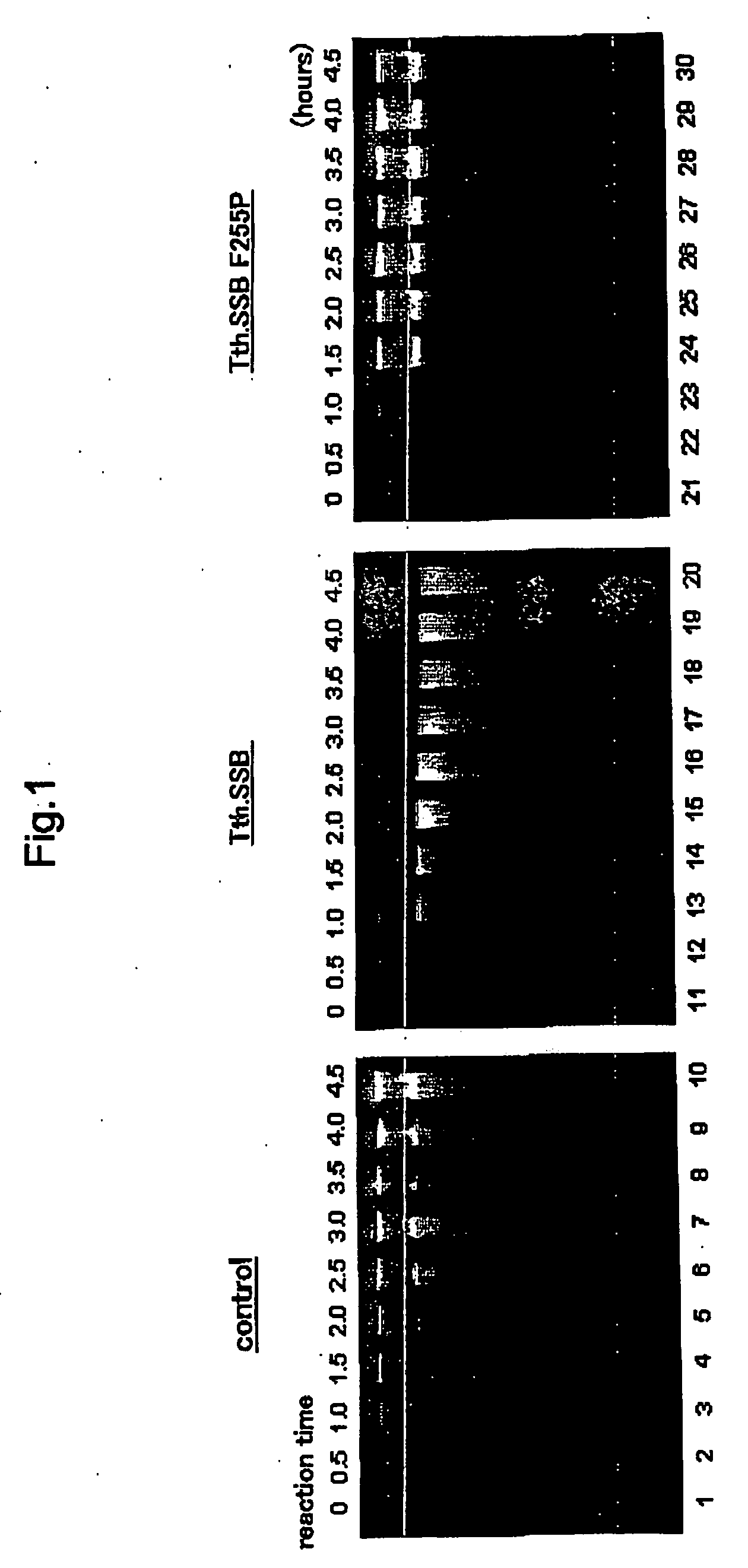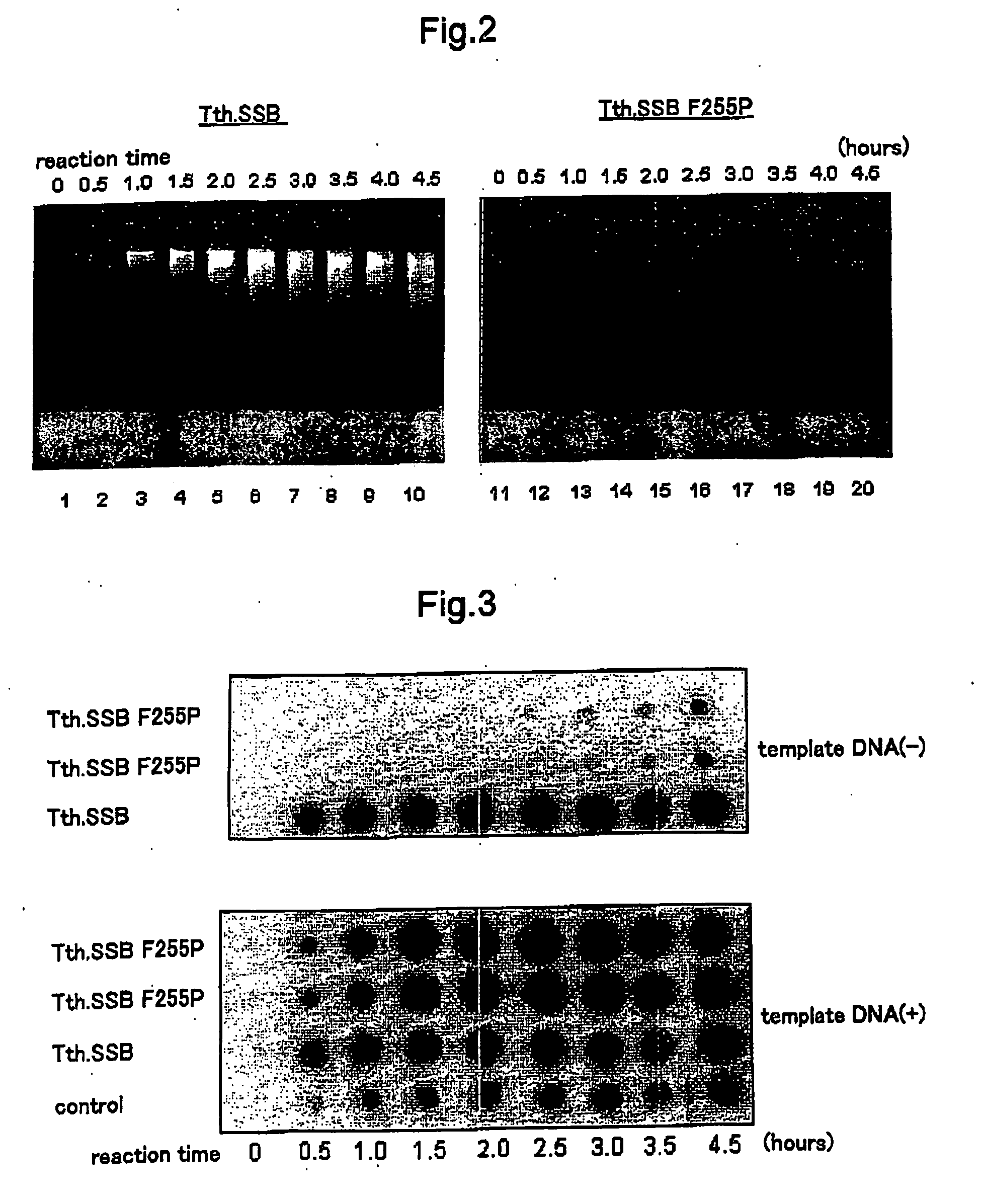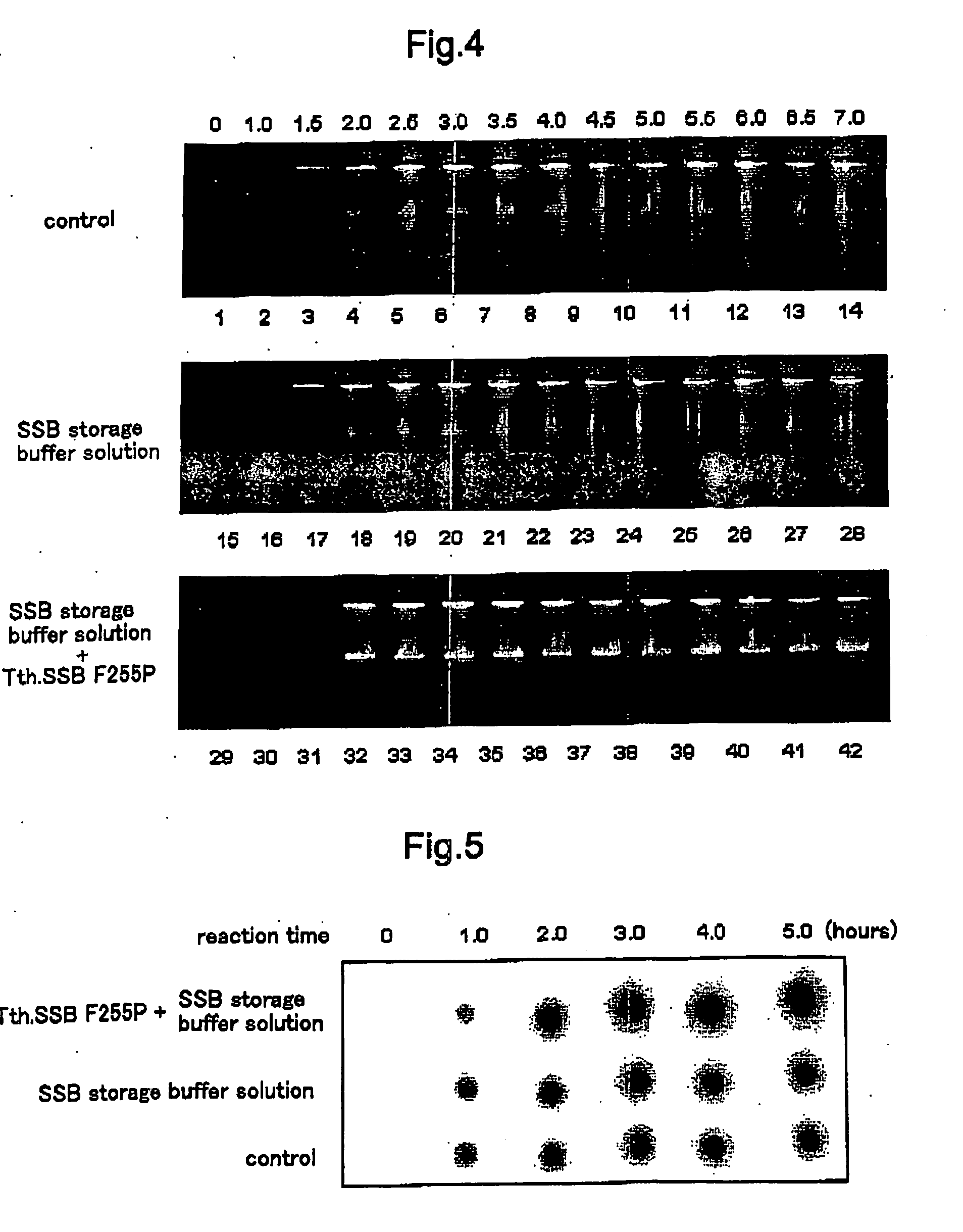Extreme thermophile single-stranded DNA binding mutant protein, and nucleic acid isothermal amplification method of use thereof
a technology of dna binding and mutant proteins, applied in the field of extreme thermophile single-stranded dna binding mutant proteins, can solve the problems of inability to inhibit the amplification of non-specific dna fragments, easy to amplify dna fragments that are not specific to the template nucleic acid, and low amplification precision, so as to achieve the effect of increasing the amplification precision
- Summary
- Abstract
- Description
- Claims
- Application Information
AI Technical Summary
Benefits of technology
Problems solved by technology
Method used
Image
Examples
working examples
Working Example 1
Effect of the Extreme Thermophile SSB Mutant Protein on the Isothermal Amplification Reaction System -1
[0079] An experiment was conducted to evaluate the effect that the extreme thermophile SSB mutant protein has on an isothermal amplification reaction system that uses a strand-displacement polymerase by comparison with the case for the extreme thermophile SSB protein, and it was found that the extreme thermophile SSB mutant protein of the invention can improve specificity for the template nucleic acid.
[0080] Methods
[0081] An isothermal amplification reaction using a strand displacement polymerase was performed in the presence of the extreme thermophile SSB protein and the extreme thermophile SSB mutant protein, and the effects on the amplification of the template nucleic acid were compared. 20 samples of the reaction solution (10 μL) were prepared, 10 of which each included 1 ng of the template nucleic acid and 3.0 μg of the extreme thermophile SSB protein and ...
working example 2
Effect of the Extreme Thermophile SSB Mutant Protein on the Isothermal Amplification Reaction System-2
[0094] An experiment was conducted to evaluate the effect that the extreme thermophile SSB mutant protein has on non-specific amplification an isothermal amplification reaction system by comparison with the case of the extreme thermophile SSB protein.
[0095] Methods
[0096] The isothermal amplification reaction was performed in the presence of the extreme thermophile SSB protein (Tth. SSB protein) and the extreme thermophile SSB mutant protein (Tth. SSB protein F255P), and the respective effects that these have on non specific amplification were compared. Except for the fact that pUC19 DNA was not added as a template, the experiment was conducted in the same manner as in Working Example 1.
[0097] Results
[0098] The results are shown in FIG. 2.
[0099] In FIG. 2, lanes 1 to 10 are the samples in which the isothermal amplification reaction was performed in the presence of the Tth. SSB ...
working example 3
Effect of the Extreme Thermophile SSB Mutant Protein on the Isothermal Amplification Reaction System-3
[0104] 1.5 μL was separated from each of the amplification reaction solutions of Working Example 1 and Working Example 2, spotted on a nylon membrane filter and then fixed on the filter. After fixing, these were hybridized with 32P-labeled pUC19 template nucleic acid serving as a probe, and then the spots were made visible and the amount of amplification product was confirmed. The results are shown in FIG. 8.
[0105] The amount of amplification product was compared, and it was verified that the Tth. SSB protein F255P produced substantially no amplification product when the template nucleic acid was not present and yielded the amplification product only in the presence of the template nucleic acid. With the Tth. SSB protein, however, substantially the same amount of amplification product was obtained both when the template nucleic acid was present and when it was not present. That is...
PUM
| Property | Measurement | Unit |
|---|---|---|
| Efficiency | aaaaa | aaaaa |
Abstract
Description
Claims
Application Information
 Login to View More
Login to View More - R&D
- Intellectual Property
- Life Sciences
- Materials
- Tech Scout
- Unparalleled Data Quality
- Higher Quality Content
- 60% Fewer Hallucinations
Browse by: Latest US Patents, China's latest patents, Technical Efficacy Thesaurus, Application Domain, Technology Topic, Popular Technical Reports.
© 2025 PatSnap. All rights reserved.Legal|Privacy policy|Modern Slavery Act Transparency Statement|Sitemap|About US| Contact US: help@patsnap.com



